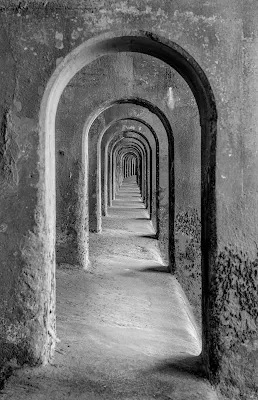Remarkable engineerings of ancient mega structures: Building Massive Structures without Modern Cement and Reinforcements
Table of Contents
Introduction
Step back in time to witness the incredible feats of ancient civil engineers! From the stunning pyramids of Egypt to the magnificent Roman Colosseum, these colossal structures stand as a testament to their brilliance. What's even more astonishing is that they achieved these marvels without today's high-tech materials like cement and reinforcements. In this journey through history, we'll explore their remarkable methods and the incredible craftsmanship behind their enduring creations.
Photo by Julian Wallner on Unsplash
The Power of Arches and Vaults
You might wonder, "How did they build those enormous structures without our fancy stuff?" Well, here's the secret - they used arches and vaults, smart architectural tricks to distribute the weight. By shaping stones into arches, they made the weight spread out along the curve, keeping everything stable. And guess what? They even knew how to counter sideways forces with smart buttressing techniques, ensuring everything stayed strong.
Mastering Simple Building Materials
Hold on tight, because you won't believe what they did with basic materials like stones, bricks, and clay. They placed stones and bricks with such precision that everything fit together perfectly, defying gravity and leaving us in awe. And that's not all - they played with clay to create beautiful patterns and designs, making their buildings real works of art. Plus, they knew just where to build, using the land's natural strength for a solid foundation.
Collaborative Efforts and Legacy
Building those massive structures wasn't a one-person show! Skilled artisans, craftsmen, and clever architects worked together like a dream team. They passed down their wisdom from one generation to another, leaving behind a legacy that still inspires us. Those ancient engineers didn't just create buildings - they created stories that echo through time.
Time Traveling through Architectural Wonders
Now, let's take a virtual trip through history! Brace yourself for breathtaking sights like the Great Wall of China, the mysterious temples of Angkor Wat, and the grand Colosseum. And don't miss the intricate carvings of Petra or the jaw-dropping terraces of Machu Picchu. It's like stepping into their world, feeling the magic of their creations.
Lessons for Modern Engineering - The Incredible Coral Castle
Let's delve into one fascinating method used by ancient engineers that still perplexes us today - the astonishing construction of the Coral Castle. Located in Florida, this architectural marvel was built by a single man named Edward Leedskalnin in the early 20th century. Using simple tools and his deep understanding of leverage and balance, Leedskalnin single-handedly carved and positioned over 1,100 tons of coral rock to create this astonishing structure.
Intricate Techniques: The Coral Castle Unveiled
Edward Leedskalnin's ingenious approach involved cutting and moving massive coral rocks with seemingly superhuman strength and precision. Through a combination of simple machines and leverage, he manipulated the stones with such precision that they fit together seamlessly, defying the laws of gravity.
The Mystery Remains
Despite decades of research and speculation, the methods employed by Leedskalnin remain shrouded in mystery. Many theories abound, from the idea of using magnetic devices to lost ancient knowledge. However, the true secrets behind the Coral Castle's construction have never been fully revealed.
 CC BY 2.0 href="https://commons.wikimedia.org/w/index.php?curid=1311418">Link
CC BY 2.0 href="https://commons.wikimedia.org/w/index.php?curid=1311418">LinkAs we journey through the marvels of ancient engineering, we gain an appreciation for the brilliance and resourcefulness of our ancestors. They harnessed the power of arches, mastered the use of simple building materials, and left behind a legacy of collaboration and ingenuity. These enduring structures continue to inspire us today, reminding us that with determination and creativity, humans can achieve the extraordinary. Let's celebrate the timeless wisdom of these ancient engineers and draw inspiration from their incredible accomplishments as we build the future.



Post a Comment